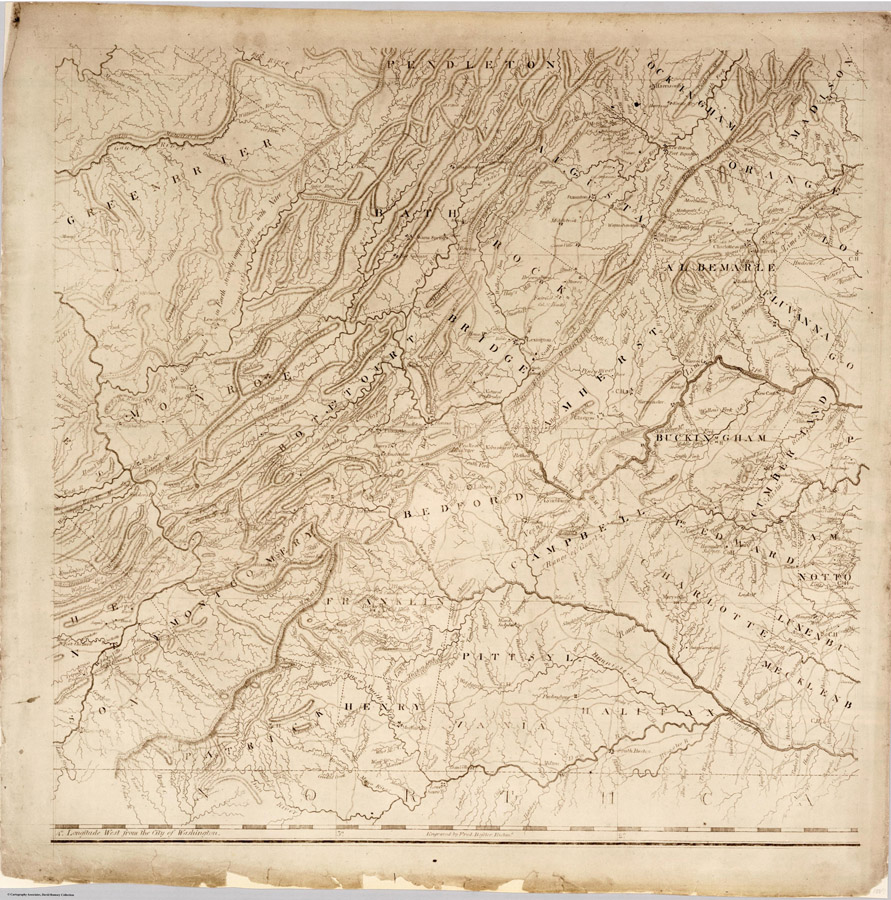|
Moderated by NW Okie! |
Volume 15 , Issue 102013Weekly eZine: (371 subscribers)Subscribe | Unsubscribe Using Desktop... |
History of Rockbridge County, Virginia

In chapter XXXI, of The History of Rockbridge County, Virginia, written by Oren F. Morton, we discover that like all agricultural communities of its class, this county had been a nursery ground for the peopling of newer portions of the Union. For awhile the outflow was wholly toward the points in the western half of the compass dial emigrants from this locality were in the forefront i of settling the Bluegrass region of Kentucky. Many of the sons and daughters of Rockbridge poured into the Valley of East Tennessee to make some of its counties look like colonies of Rockbridge. Some went further until they reached the Pacific coast or the vicinity of the Rio Grande.
The people of Rockbridge had been a rather prolific stock. The colonial immigrants from Ulster were the pick of that region. The other people who took part in the subjugation of the Rockbridge wilderness were among the more energetic of the dwellers along the Atlantic coast. The fusion of these elements produced a stock virile, forceful and intellectual. Coming from it were statesmen, soldiers, explorers, professional men, writers and inventors, and was a more natural consequence.
One of those was Rev. Henry W. McLaughlin, D. D. Pastor, New providence Presbyterian Church, October, 1909. There was a Southern Seminary, Buena Vista, Virginia, founded 1868, devoted to the education of girls and young women.
Of the celebrities named in "Augusta County, Virginia, in the History of the United States," fifty-three were contributed by four families: The McDowells, Dunlaps, Logans, and the McKees.
The influences that drew settlers to Rockbridge were the two great educational institutions of Lexington. Conspicuous among the personages of this class were Robert E. Lee, the foremost chieftain of the Confederacy; Stonewall Jackson, the right arm of Lee; Matthew F. Maury, the "Pathfinder of the seas," John Brown and William Graham, founders of Liberty Hall Academy; Henry Ruffner and George Junkin, presidents of Washington College; Francis H. Smith, fifty years the head of the Virginia Military Institute; John W. Brockenbrough, jurist and teacher of law, David H. Hill, the soldier-professor; J. Randolph Tucker, authority on constitutional law; William L. Wisson, congressman, cabinet officer, and university president; John M. Brooke, the professor who planned the ironclad Merrimac and made ocean cables possible by his device for determining the depth of the ocean; and finally, the authoresses, Margaret Junkin Preston and Susan P. Lee.
We also learned that Warrick county, Indiana, was named in honor of Jacob Warrick, who was born on the Calfpasture in 1773 and fell in the battle of Tippecanoe. He was a son of John and grandson of William Warwick. His descendants figure in Western history.
| View or Add Comments (0 Comments)
| Receive
updates ( subscribers) |
Unsubscribe
| © . Linda Mcgill Wagner - began © 1999 Contact Me | |
